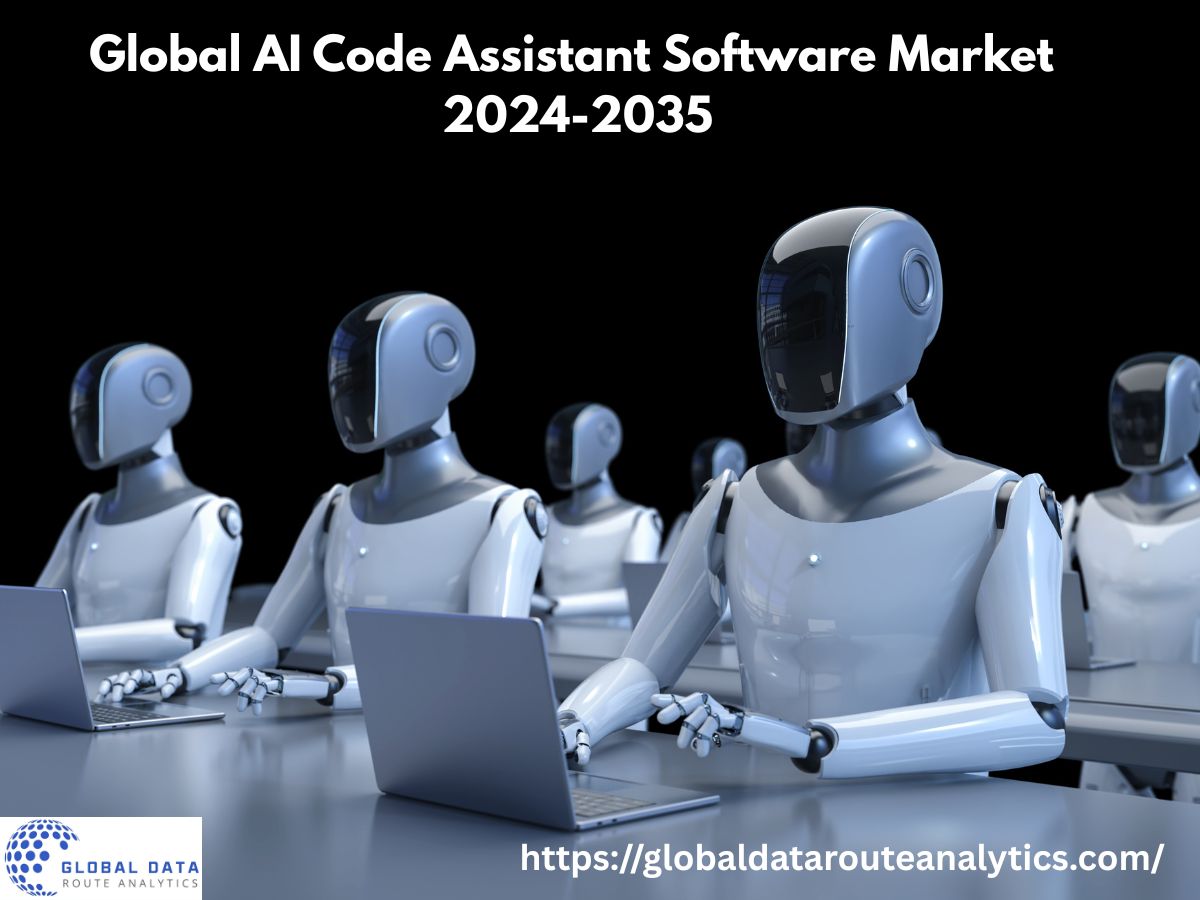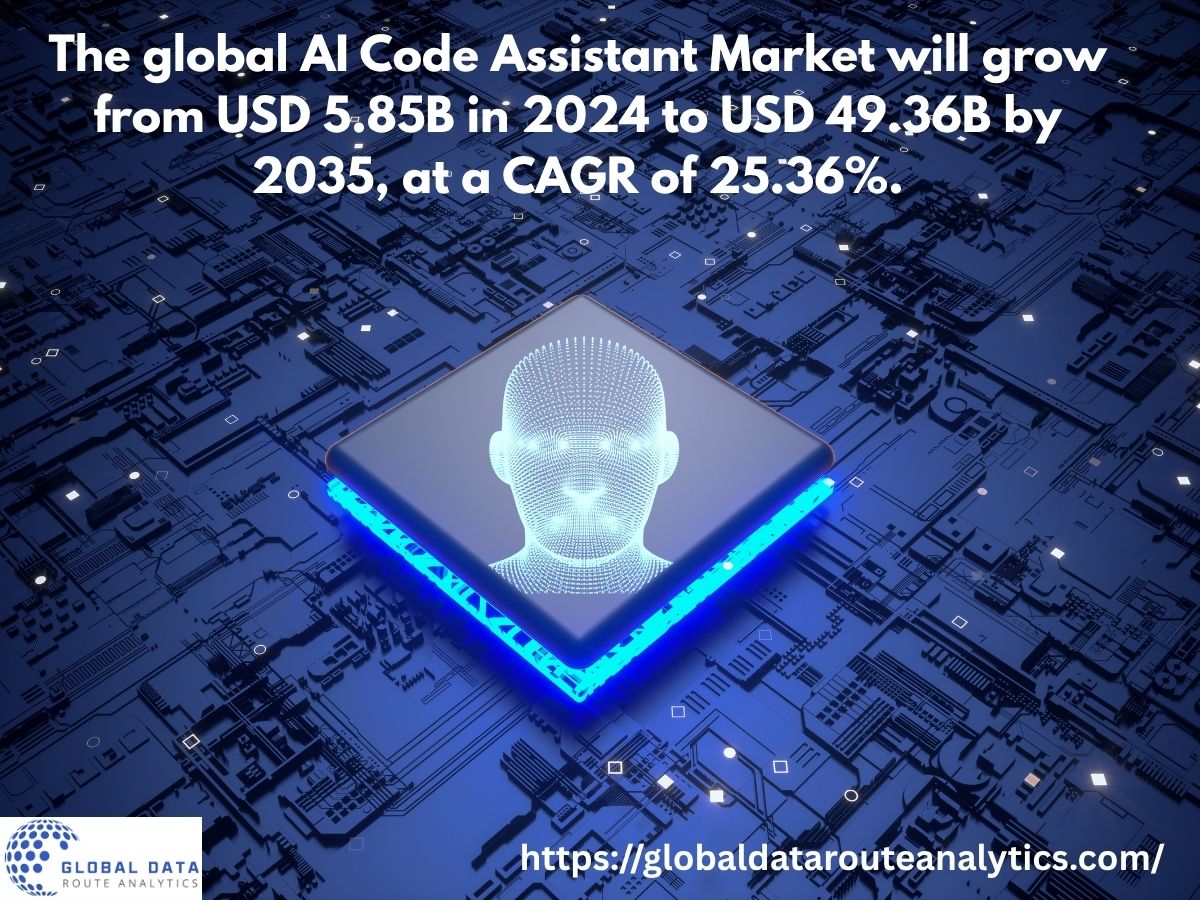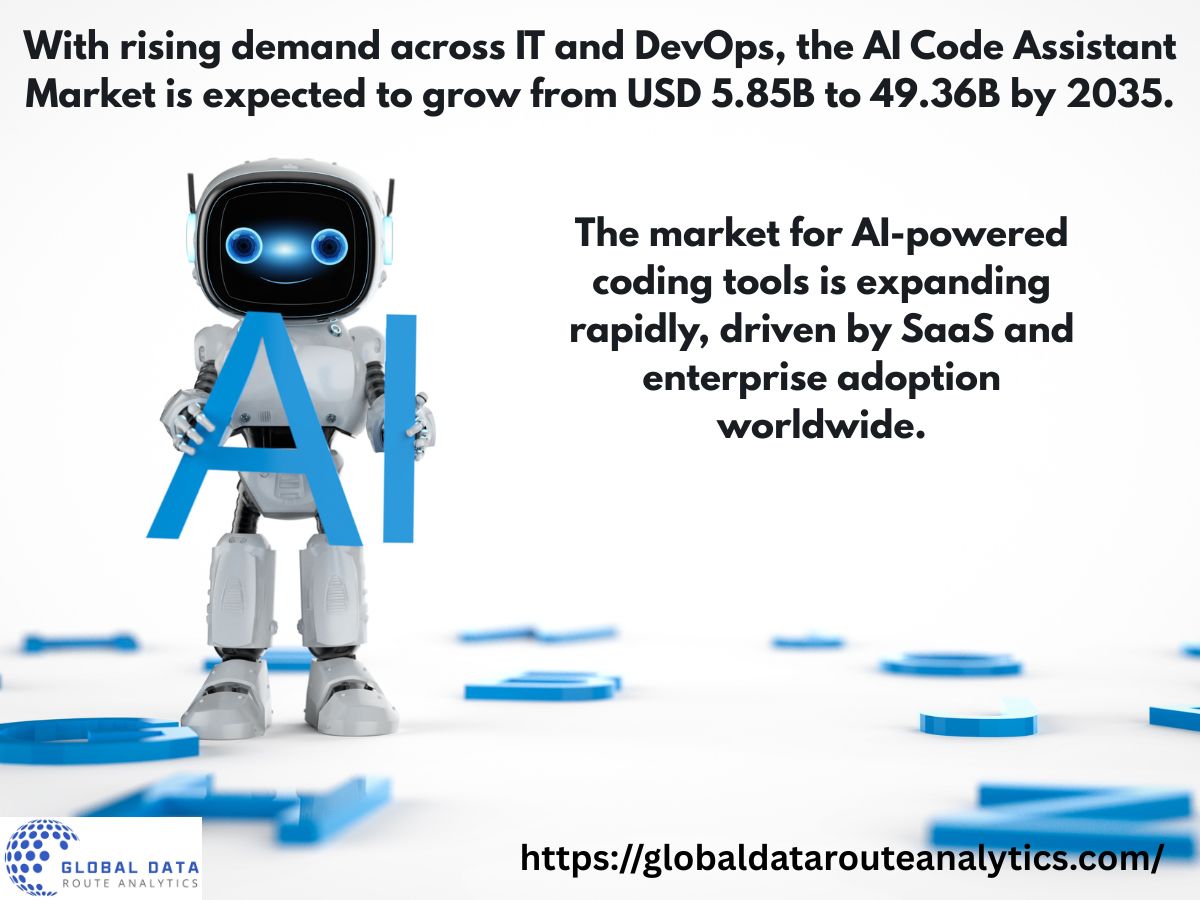Global AI Code Assistant Software Market to Reach USD 49.36 Billion by 2035 | CAGR 25.36% from 2025–2035

Dehri, Bihar Jul 18, 2025 (Issuewire.com) The global AI Code Assistant Software Market is experiencing transformative growth, driven by the widespread adoption of generative AI in developer tools and enterprise software. AI-powered coding assistants are helping developers write, optimize, and debug code faster, reducing development time and increasing productivity across industries.
According to a recent market analysis, the global AI Code Assistant Market is anticipated to reach a value of USD 49.36 billion by 2035, expanding from USD 5.85 billion in 2024. This impressive growth represents a compound annual growth rate (CAGR) of 25.36% from 2025 to 2035, reflecting massive demand from the IT, SaaS, and DevOps sectors.
AI coding assistants leverage large language models (LLMs) to suggest real-time code completions, generate snippets, translate code across languages, and detect bugs early. As organizations rapidly modernize software development workflows, the demand for automated code generation tools is accelerating globally.
This market includes a range of products such as cloud-based AI code assistants, integrated development environment (IDE) plugins, and enterprise-specific AI models tailored for secure and regulated environments. These tools are reshaping developer productivity across startups and Fortune 500 firms alike.
Key players in the AI Code Assistant Software Market include GitHub (Copilot), Amazon Web Services (CodeWhisperer), Replit (Ghostwriter), Tabnine, Google DeepMind (AlphaCode), Salesforce CodeGen, CodiumAI, and JetBrains. Several new GenAI startups are also entering the space with domain-specific solutions.
The market is segmented by deployment type, application, organization size, and end-use industry. Deployment segments include cloud-based and on-premise solutions, with cloud-based tools leading due to their scalability and integration flexibility.
By application, the market covers code completion, unit test generation, bug detection, documentation, and code translation. Code completion and bug detection remain dominant due to their direct impact on developer efficiency and product quality.
In terms of organization size, both large enterprises and SMEs are adopting AI code assistants. While large companies use enterprise versions with security controls, SMEs prefer API-based or open-source variants to reduce development costs.
Key industries driving demand include IT services, banking and fintech, healthcare software, e-commerce platforms, and gaming studios. These sectors require rapid product iteration and benefit from reduced time-to-market enabled by AI tools.
North America remains the largest regional market for AI code assistants, owing to strong adoption by U.S.-based technology giants and early investment in AI infrastructure. Europe and Asia-Pacific are witnessing fast growth as regional developers embrace AI-driven software engineering.
The emergence of low-code and no-code platforms is further accelerating this market. Many platforms now integrate AI code assistants to help non-developers build applications with natural language inputs, expanding the market beyond professional programmers.
In addition to productivity benefits, AI code assistants improve code consistency, lower human error, and enhance team collaboration by suggesting standardized functions and maintaining coding style guidelines.
However, data privacy, hallucinated outputs, and dependency risks are key challenges in this market. Enterprises are investing in private LLMs and fine-tuned models trained on internal codebases to overcome these limitations.
The future of the AI Code Assistant Software Market will be shaped by developments in open-source models, proprietary enterprise tools, and collaboration between cloud service providers and AI research labs.
Strategic partnerships are emerging as a strong trend. For example, GitHubs integration with OpenAI models, and Replits AI-driven dev environment are setting new benchmarks for developer experience and coding speed.
Investors and SaaS product managers are closely tracking this market as AI development tools become essential for building software at scale. Startups that integrate these assistants into their platforms are seeing improved user retention and faster release cycles.
The adoption of AI assistants is also impacting software education and onboarding, with many companies using these tools to train junior developers or automate documentation processes.
As GenAI becomes mainstream, AI code assistants are expected to become default features in most developer tools. The market will likely consolidate around major players, with opportunities for niche players offering secure, domain-specific, or open-source alternatives.
The upcoming decade is set to witness a major shift in how code is written, reviewed, and deployed. The AI Code Assistant Software Market is not just a trendit's a fundamental transformation in software engineering.
This market report provides detailed insights into market size, regional analysis, competitive landscape, key vendors, pricing models, and future outlook. It is designed for CTOs, DevOps managers, investors, and product teams looking to understand and act on this fast-growing opportunity.
For a free sample report, click the link below:
https://globaldatarouteanalytics.com/contact
Visit our website: https://globaldatarouteanalytics.com/


Media Contact
Global Data Route Analytics
Pali Road
Source :Global Data Route Analytics Kumar Complex Pali Road, Dehri-on-Sone Rohtas, Bihar 821307 Email: [email protected]
This article was originally published by IssueWire. Read the original article here.
Information contained on this page is provided by an independent third-party content provider. XPRMedia and this Site make no warranties or representations in connection therewith. If you are affiliated with this page and would like it removed please contact [email protected]

